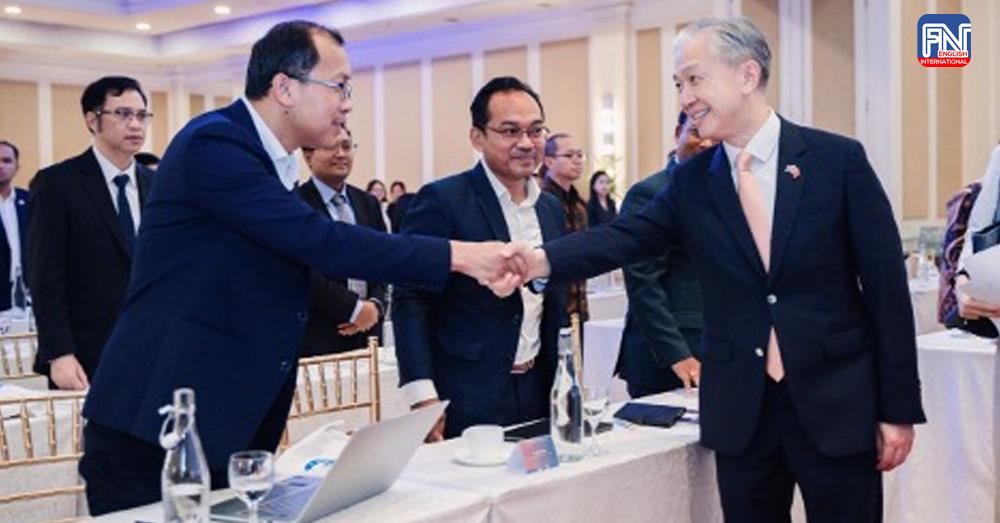Phnom Penh (FN), Nov. 13 – The Lancang-Mekong River plays a role in Southeast Asia by supplying water for farming activities and energy generation as well as supporting the fishing industry and local communities’ livelihoods in the regions, countries such as Cambodia located downstream and China controlling the upstream section of the Lancang River are pivotal actors involved in managing the basin resources. Chinas increasing involvement through financial aid and technical assistance to Cambodia is shaping water related policies in this area. Cambodia perceives China as a valuable partner in progress particularly in endeavors related to hydropower development irrigation schemes and infrastructure projects.
China’s Assistance to Cambodia
Chinas dedicated support for Cambodia in water management and infrastructure development plays a role in their collaboration efforts. The Belt and Road Initiative (BRI) initiated by China has paved the way for Cambodia to secure funding for infrastructure ventures that align with the Lancang-Mekong Cooperation (LMC). China’s contributions towards hydropower facilities, dams and irrigation systems have played a role in meeting Cambodia’s energy demands and enhancing its agricultural output.
Hydropower is a source of energy in Cambodia with involvement from Chinese firms in building and funding such projects. The Lower Sesan II hydropower dam is an example of this collaboration as it was financed and constructed by China’s Hydro-lancang International Energy. It stands out as one of Cambodia’s initiatives within the Mekong system that supplies electricity to millions of Cambodians. Yet, it has sparked worries about its effects on the environment and society.
China has offered assistance to Cambodia’s irrigation initiatives in order to boost output and productivity level effectively. This aid is crucial for Cambodia as it strives to increase its rice exports and address food security concerns. China’s funding and specialized knowledge in irrigation projects along the Mekong and Tonle Sap River networks have enhanced water availability during periods which has proven beneficial for farmers in Cambodia.
The framework of Lancang Mekong Cooperation (LMC)
The initiation of the Lancang-Mekong Cooperation (LMC) in 2015 serves as a facilitator for fostering discussions and collaboration among the six countries along the riverbanks such as Cambodia and China. The primary objective of LMC is to enhance growth delineate unity and management of water resources. China’s direction and financial support towards the LMC have bolstered its impact within the area.
Cambodia has seen outcomes from China’s involvement in initiatives through the LMC that focus on enhancing infrastructure development and disaster preparedness while also facilitating data exchange regarding water levels and hydrological conditions in the region which is vital for Cambodia’s water security and developmental aspirations due to its reliance on the Mekong River.
The obstacles
Chinas assistance brings advantages to Cambodia but it also poses difficulties in overseeing regional water resources and environmental conservation efforts. A situation that demands cautious handling to secure lasting advantages for both nations and the wider area.
Environmental Issues
Building dams in China has changed how the Mekong River flows and impacted countries downstream like Cambodia by causing water levels during the dry months and altering fish movements and sediment patterns as a result of dam construction further up the river system which in turn has affected fishing activities in places such as Tonle Sap Lake where fish reproduction relies heavily on seasonal floods.
Major construction undertakings like dams in Cambodia have resulted in the relocation of communities as seen with the Lower Sesan II dam where numerous individuals were uprooted with worries regarding insufficient compensation and resettlement plans that linger on despite the benefits, they bring in terms of energy security for Cambodia.
Relying on investments from China
Concern has been mounting over Cambodia’s increasing reliance on investments in its water and energy industries due to worries regarding the nation’s sovereignty and ability to manage long term debt effectively. The substantial support from China as Cambodia’s benefactor and backer has sparked discussions on whether Cambodia's vulnerable to a type of "debt trap diplomacy." This heavy dependence on financing for infrastructural endeavors may impede Cambodia’s capacity to develop its unique water management tactics or cooperate with other regional players concerning Mekong River governance matters.
Backing Cambodia’s interests
Chinas commitment to assisting Cambodia goes beyond infrastructure projects; it aims to solidify its presence as Cambodia’s collaborator in development initiatives to secure strategic influence in Southeast Asia geopolitics. Cambodia’s consistent alignment with China in ASEAN discussions and conflicts like the South China Sea matter establishes it as a partner for China within bodies.
Strategic considerations
Cambodia’s close partnership with China plays a role in safeguarding Chinese interests in the Mekong region and has given China influence on water management matters in the area too. Through assisting Cambodia with power and agriculture projects, China not only enhances their relationship with Cambodia but also advances their larger strategic goals such as the Belt and Road Initiative.
Cambodia depends on the Mekong River for farming and fishing as hydroelectric power generation which coincides with China’s economic pursuits in the area. By funding Cambodia’s water system development, China can ensure lasting access to resources, trade paths and investment chances. Furthermore, Cambodia serving as a gateway for products entering Southeast Asia and strengthens its significance within China’s regional plans.
Enhancing Collaboration
For the Cambodia-China partnership to continue benefiting both nations’ sustainably, it is crucial to take a rounded approach that takes into account economic prosperity as well as environmental and social aspects. While China’s assistance in terms of finance and technology plays a role in Cambodia’s progress. It is essential to prioritize the implementation of water management strategies to safeguard the long-term well-being of the Mekong River.
Sustainable growth
Cambodia and China ought to collaborate on creating eco-initiatives that limit negative effects on the environment and communities involved. By conducting environmental evaluations and engaging with local residents in the decision-making process while advocating for alternative energy sources such as solar and wind power we can diminish the environmental footprint associated with hydropower projects.
Enhancing transparency in sharing water data between China and downstream nations such as Cambodia is crucial for improving water management practices in the region. China’s collaboration in sharing up to date information regarding water discharge from its dams can significantly aid Cambodia in the handling of its water reserves during periods of drought or flooding. It is imperative to strengthen monitoring initiatives and early warning systems for weather occurrences within the framework of the Lancang Mekong Cooperation (LMC).
Engaging with the public
Cambodia and China ought to promote involvement from the public in managing water resources, effectively engaging communities, civil society groups, and educational establishments is key to ensuring that water management policies are inclusive and cater to the requirements of the most marginalized groups, involving stakeholders across different levels can build trust and enhance the sustainability of water initiatives in the long term.
Cambodia’s collaboration with China provides prospects for growth in sectors like hydropower and agriculture; nonetheless this alliance brings about complexities that require cautious handling to guarantee sustainable progress and effective water resource governance strategies in place. By placing emphasis on preserving the environment as a priority and promoting transparency through data exchange as well as involving the public in decision making processes, Cambodia and China can enhance their partnership while safeguarding the long-term well-being of the Mekong River.
The collaboration between Cambodia and China within the Lancang-Mekong framework underscores the significance of harmonizing development objectives with sustainability initiatives in the region’s best interest. With management and coordination this partnership could play a role in promoting economic growth and well-being across the Mekong region.
Seun Sam is a policy analyst of the Royal Academy of Cambodia and he is also a part-time lecturer of Business School of Hohai University, China. This paper is a part of his project in Hohai University, China.
=FRESH NEWS





